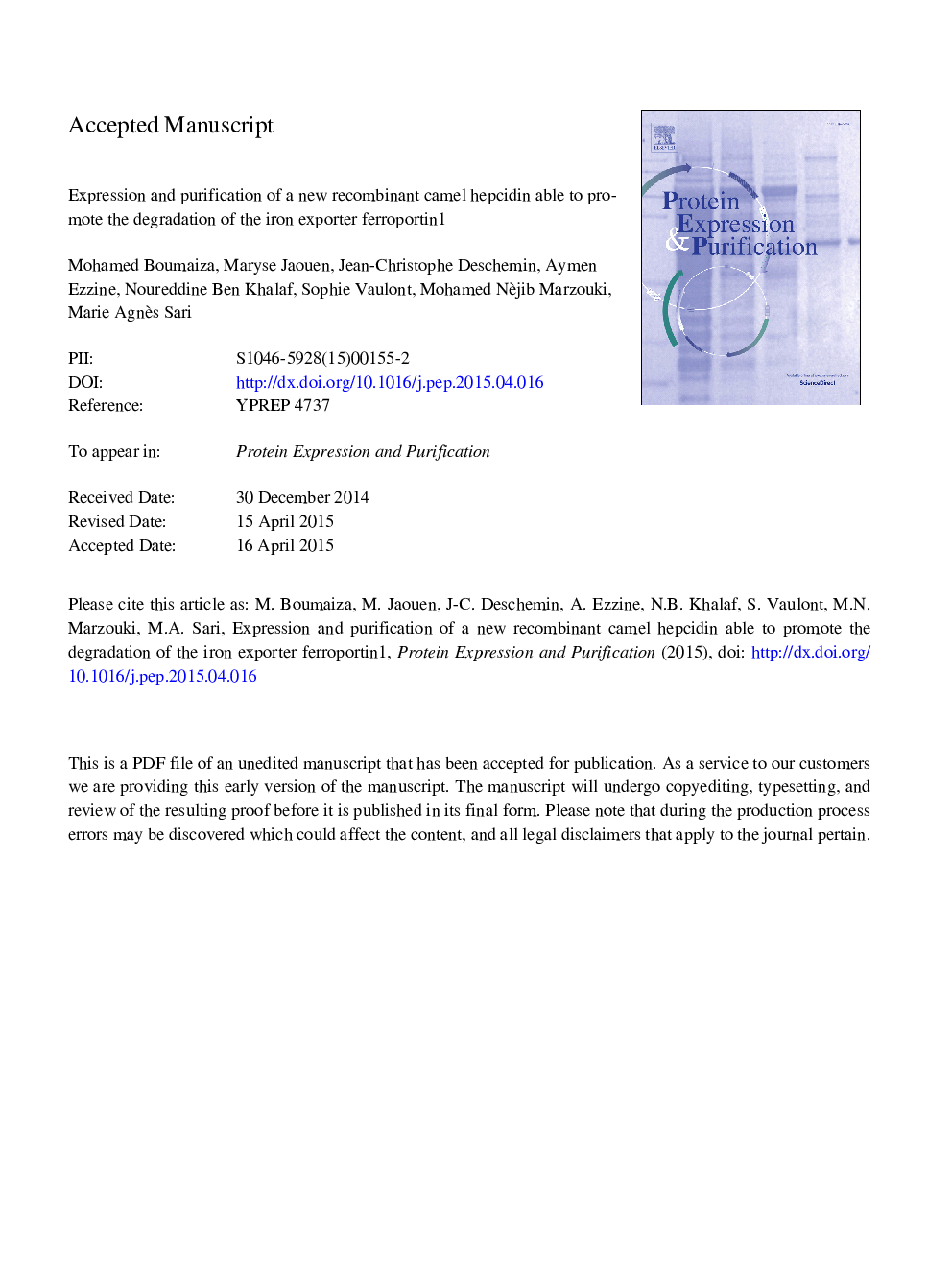| Article ID | Journal | Published Year | Pages | File Type |
|---|---|---|---|---|
| 8359935 | Protein Expression and Purification | 2015 | 30 Pages |
Abstract
Hepcidin, a 25-amino-acid and highly disulfide bonded antimicrobial peptide, is the central regulator of iron homeostasis. This hormone is expressed in response to iron and inflammation and interacts with ferroportin1 (FPN1), the only known iron exporter in vertebrates, inducing its internalization and degradation. Thus, the export of iron from cells to plasma will be significantly diminished. Thereby, hepcidin has become the target of intense research studies due to its profound biomedical significance. This study describes the functional expression of recombinant camel hepcidin in Escherichia coli. Biologically active recombinant camel hepcidin was obtained thanks to the production of a hepcidin-thioredoxin fusion protein (TRX-HepcD) and a purified camel hepcidin, with an extra methionine at the N-terminus, was obtained after enterokinase cleavage of the fusion protein. Presence of the four disulfide bridges was verified using MALDI-ToF spectrometry. The recombinant camel hepcidin was compared to related synthetic bioactive peptides, including human hepcidin, and was found equally able to promote ferroportin degradation of mouse macrophages. Furthermore, camel hepcidins exhibits a high capacity to inhibit the growth of Leishmania major promastigotes. These results proved that production of functional camel hepcidin can be achieved in E. coli, this is a major interest for the production of cysteine rich peptides or proteins that can be purified under their functional form without the need of a refolding process.
Related Topics
Life Sciences
Biochemistry, Genetics and Molecular Biology
Biochemistry
Authors
Mohamed Boumaiza, Maryse Jaouen, Jean-Christophe Deschemin, Aymen Ezzine, Noureddine Ben Khalaf, Sophie Vaulont, Mohamed Nèjib Marzouki, Marie Agnès Sari,
